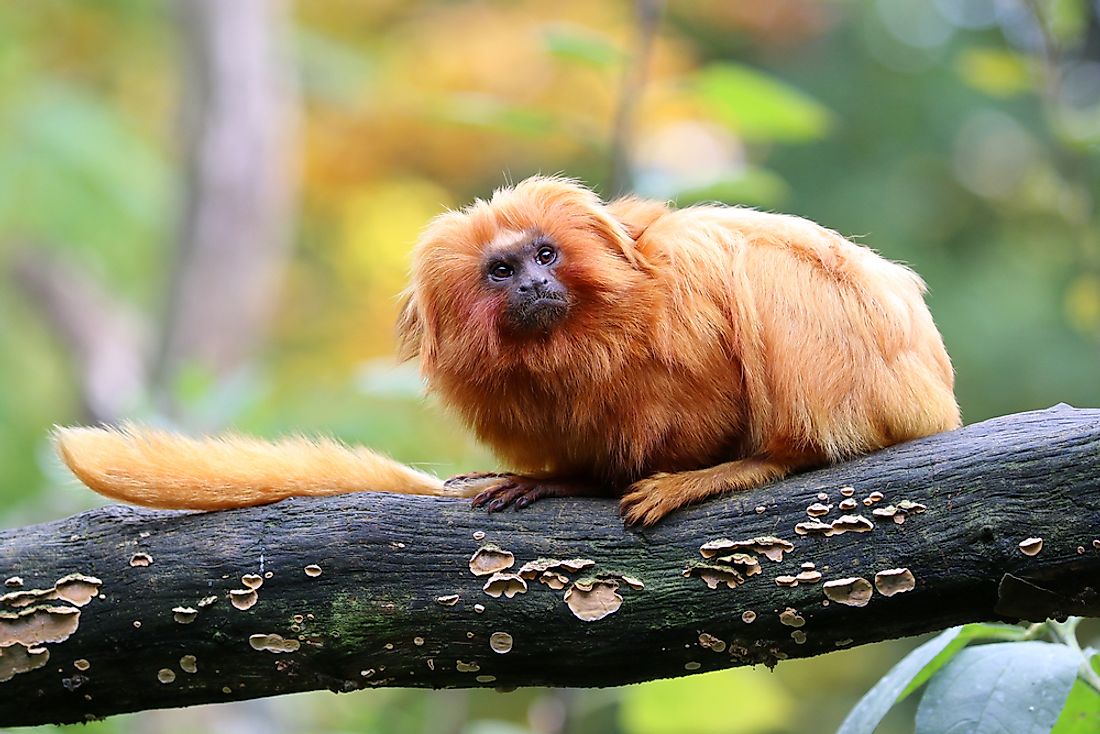Golden Lion Tamarin Facts: Animals of South America

The Golden lion tamarin, also known as the Golden Marmoset, is endemic to the coastal Atlantic forest in the region of Brazil. It is a monkey of the new world and listed as endangered. It is estimated that about 3,500 individuals of this animal in the wild. The Golden lion tamarin now struggle to survive in few forest locations of their original range due to high rates of deforestation that has taken place over the years.
Reproduction
Until 1970, a trend in the reproduction of the Golden lion tamarin population was noted to be dismal which greatly affected the population growth of this precious species. At the age of 16 to 20 months, the Golden lion tamarin becomes sexually mature. Being seasonal breeders, the Golden lion tamarin usually bear their litters in July and November during the temperate zone in Brazil. A change in the animal’s socio-sexual interactions between the different genders occurs when the females reach 2-3 weeks in their estrus cycle. Grooming occurs, and constant interaction and sniffing of the Golden lion tamarin increases as the peak of the estrus cycle. The documented gestation period is 130-145 days. Giving birth to 1-3 young ones is the norm when they weigh close to 20z. With the male always insisting on taking part in the rearing of the young ones, the weaning period lasts for three months at most.
Behavior
The Golden lion tamarin likes to remain close with their family members and travel in manageable groups of 2-8 individuals. They are agile and active, always running around, jumping, and leaping from tree to tree. When in a resting state, the tamarins normally fold their fingers inwards for excellent support while clinging to different branches. Through the movement of their eyelids, hairy heads, and eyes, the tamarins express their emotions and communicate with each other. Engaging in mutual grooming enables the Golden lion tamarin to always care for their beautiful fur.
Habitat and Range
Golden lion tamarins reside in the dense forest areas packed with trees and vines. They are mostly found around Rio de Janeiro in the Atlantic coastal forest of Brazil. This high humidity of the area offers the tamarins beautiful lush vegetation which is approximately 30 to 90 feet off the ground. To protect themselves from any predators the tamarins usually sleep in the tree holes which also offer them warmth at night.
Diet
Through micromanipulation, the Golden lion tamarin normally search barks, crevices, and bromeliads among other hiding locations to find their prey. They are known to be omnivorous so apart from probing different areas for live prey, they feed on tree gum, flowers, succulent leaves, and nectar. When placed in the zoo, they are normally given a marmoset diet consisting of marmoset jelly, mealworms, monkey chow, and fruit slices.
Physical Description
The Golden lion tamarin’s male is noticeably larger than their female counterparts, but both have a similar lifespan of 10-12 years. These tamarins are one of the world’s rarest and striking land mammals due to their silky golden hair from where their name was derived. The lustrous golden fur covers most parts of the body, with their faces being majorly naked. Some tamarins have brown or black fur coloration on the tail and forepaws. The Golden lion tamarin does not have opposable thumbs found on the shorter forelimbs and longer hind limbs. Their canines are visibly longer compared to the incisors.







